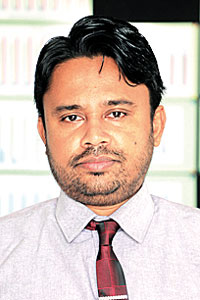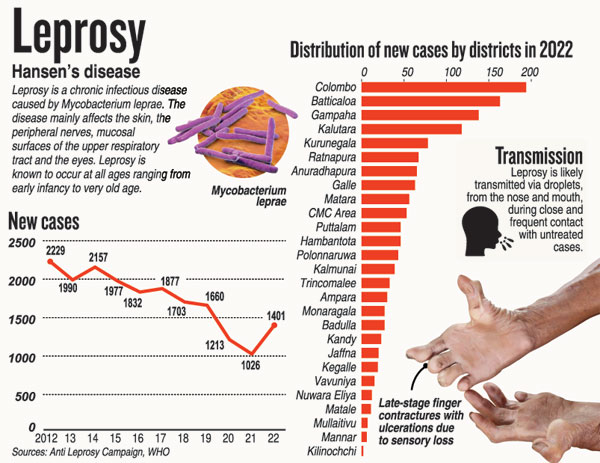News
Gravity of undiagnosed leprosy infections will be felt in 3-5 years
View(s):By Nadia Fazlulhaq
As a result of the COVID-19 lockdown, limited hospital visits, and field inspections, undetected leprosy cases will emerge in the coming years, a senior Health Ministry official warned.
The Health Ministry’s Anti-Leprosy Campaign Director, Dr. Prasad Ranaweera, said if a person has been exposed to an untreated person over a long period of time (for several weeks or months), it takes about 3-5 years to manifest early symptoms such as pale patches on his or her skin.

Dr. Sankha Withanage. Pic by M.A. Pushpa Kumara
“If a family member had leprosy and his or her family were exposed to them for long periods of time during the pandemic, they were at high risk. This makes the next year or two very crucial, as we are currently in the incubation period,” he said.
In 1995, the WHO declared Sri Lanka had eliminated leprosy as a public health problem.
“Local health authorities are advised to be vigilant, to continue with awareness, and to increase field visits to control the numbers. Currently, there is an alarming increase, especially in coastal areas,’’ Dr. Ranaweera said.
According to the Anti-Leprosy Programme, Colombo District has the highest number of cases this year, with the majority from Moratuwa and Colombo Municipal Council areas. Cases also remain high in Dehiwala, Panadura, Kesbewa, and Piliyandara.
Out of Colombo, leprosy cases are high in the Gampaha and Batticaloa districts. Cases have also been detected in the Kalutara, Anuradhapura, and Kurunegala districts.
Leprosy, declared a neglected tropical disease by the WHO, mainly spreads via respiratory droplets.
Most victims are between 20 and 44 years of age, and this year, 105 children (below 14 years of age) have been detected with leprosy.
“There is a social stigma attached to leprosy; therefore, we discontinued school-level screening while instructing MoHs to protect the identity of students with leprosy,” he said.
He requested that those with suspicious skin infections meet a consultant dermatologist without delay, visit the skin clinic of the nearby government hospital, and start on medication that lasts up to a year.
If left untreated, this chronic disease can cause severe nerve damage, numbness in the affected areas, loss of reflexes and tingling feeling, weakness and body pain, ulcers on the feet, and disfiguring sores and deformities.
“The WHO recommends keeping the child leprosy level at 4%, but we are at 10%. The deformity rate (due to late diagnosis) is about 4–8%, which is quite high,” Dr. Ranaweera said.
Egoda Uyana in Moratuwa has the highest recorded number this year.
“We detected over 45 cases in Koralawella and Willorawatte low-income households. There are several cases from the Soysapura MoH division as well. We have increased surveillance, and more detections are taking place,” said Dr. Sankha Withanage, MoH Egoda Uyana.
“The social stigma attached to leprosy is still prevalent in the community. People believe a simple touch or a single droplet will cause the disease. Some assume it’s some fungal infection or tinea versicolor (popularly known as ‘alu-hum’). Early detection and treatment are essential to prevent the disease from spreading,” he said.

The best way to say that you found the home of your dreams is by finding it on Hitad.lk. We have listings for apartments for sale or rent in Sri Lanka, no matter what locale you're looking for! Whether you live in Colombo, Galle, Kandy, Matara, Jaffna and more - we've got them all!

